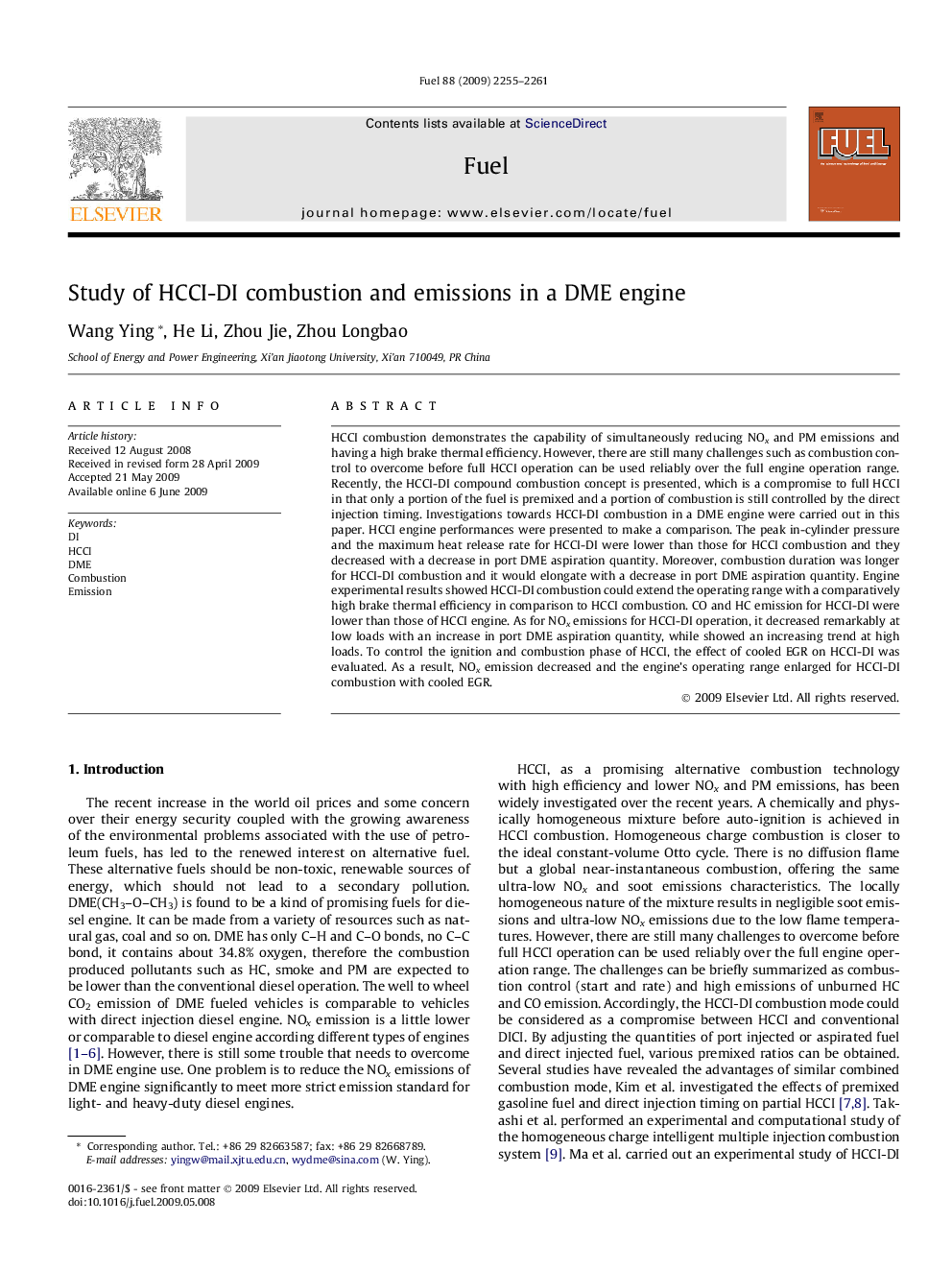| Article ID | Journal | Published Year | Pages | File Type |
|---|---|---|---|---|
| 206716 | Fuel | 2009 | 7 Pages |
HCCI combustion demonstrates the capability of simultaneously reducing NOx and PM emissions and having a high brake thermal efficiency. However, there are still many challenges such as combustion control to overcome before full HCCI operation can be used reliably over the full engine operation range. Recently, the HCCI-DI compound combustion concept is presented, which is a compromise to full HCCI in that only a portion of the fuel is premixed and a portion of combustion is still controlled by the direct injection timing. Investigations towards HCCI-DI combustion in a DME engine were carried out in this paper. HCCI engine performances were presented to make a comparison. The peak in-cylinder pressure and the maximum heat release rate for HCCI-DI were lower than those for HCCI combustion and they decreased with a decrease in port DME aspiration quantity. Moreover, combustion duration was longer for HCCI-DI combustion and it would elongate with a decrease in port DME aspiration quantity. Engine experimental results showed HCCI-DI combustion could extend the operating range with a comparatively high brake thermal efficiency in comparison to HCCI combustion. CO and HC emission for HCCI-DI were lower than those of HCCI engine. As for NOx emissions for HCCI-DI operation, it decreased remarkably at low loads with an increase in port DME aspiration quantity, while showed an increasing trend at high loads. To control the ignition and combustion phase of HCCI, the effect of cooled EGR on HCCI-DI was evaluated. As a result, NOx emission decreased and the engine’s operating range enlarged for HCCI-DI combustion with cooled EGR.
